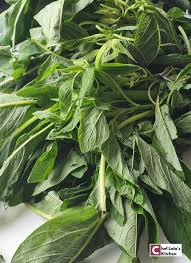Nutritional & Health Overview of Spanach leaf

Spinach leaf refers to the edible leaves of the plant known scientifically as Spinacia oleracea. It is a leafy green vegetable valued for its rich nutritional content and health benefits.
🌿 Overview of Spinach Leaf
- Scientific name: Spinacia oleracea
- Family: Amaranthaceae
- Origin: Central and Western Asia
- Common Names: Spinach, Efo tete (in Yoruba, Nigeria), Palak (in Hindi), Espinaca (in Spanish)
🧪 Nutritional Profile (per 100g of raw spinach)
- Calories: 23 kcal
- Protein: 2.9 g
- Carbohydrates: 3.6 g
- Fiber: 2.2 g
- Vitamin A: 469 µg (from beta-carotene)
- Vitamin C: 28 mg
- Iron: 2.7 mg
- Folate, magnesium, potassium, vitamin K
đź’š Health Benefits
- Supports Eye Health
- Rich in lutein and zeaxanthin, antioxidants that protect against cataracts and macular degeneration.
- Improves Blood Health
- Contains iron, folate, and vitamin K, which support red blood cell formation and clotting.
- Boosts Immunity
- High levels of vitamin C and beta-carotene enhance immune function.
- Good for Digestion
- Its fiber content supports healthy bowel movement and gut health.
- May Reduce Inflammation
- Contains flavonoids and polyphenols that act as natural anti-inflammatory agents.
🍽️ Culinary Uses
Spinach is very versatile in cooking:
“Beat the Pressure: A Comprehensive Guide to Lowering Blood Pressure Naturally.”
Buy book from Gumroad or Paystack
- Can be eaten raw in salads
- Boiled or steamed as a side dish
- Blended into smoothies or soups
- Sautéed with onions, garlic, and oil
- Added to rice, eggs, pasta, or stews (like Nigerian efo riro)
⚠️ Precautions
- Spinach contains oxalates, which may contribute to kidney stone formation in sensitive individuals.
- Overcooking can reduce its nutrient content—light steaming is best to retain benefits.
🌍 Spinach in Nigerian Context
In Nigeria, what is commonly referred to as “spinach” may include native leafy greens like:
- Green Amaranth (Amaranthus spp.)
- Waterleaf (Talinum triangulare)
- Efo tete – a local name often used for Amaranth, not true spinach
True spinach (Spinacia oleracea) is more common in international or commercial markets and is often used in elite or modern cuisine.
Â
💔 “She said she loved me. And for fifty-two years, I believed her.” 💔
Buy The Book "The Longest Lie: A Husband’s Journey Through Love, Betrayal, and Redemption" From Gumroad
Â






